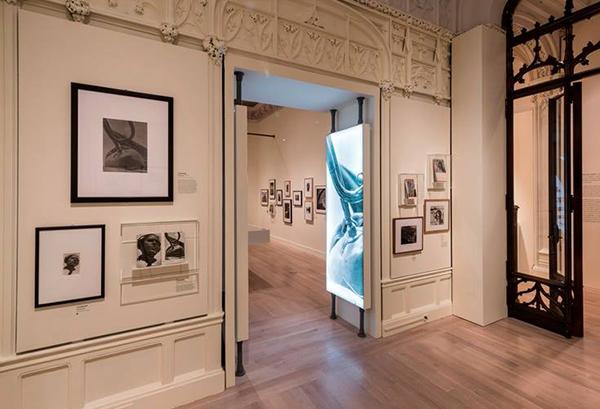Staging happiness in Soviet art at the Jewish Museum

“The Power of Pictures: Early Soviet Photography, Early Soviet Film” at The Jewish Museum is on view from September 25, 2015 to February 14, 2016.
September 29, 2015
For downtown-dwelling NYU students, a trip to the Upper West Side may be in order. The Jewish Museum on 92nd Street and Fifth Avenue has just opened a new exhibit called “The Power of Pictures: Early Soviet Photography, Early Soviet Film.” Opened Sept. 25, the exhibit explores how photography and film reflected societal and cultural transformation following the Russian Revolution.
Although small — the exhibit spans five rooms, the last being a small auditorium offering various Soviet films — one could easily spend a couple of hours examining the art. In fact, any more information would have been overwhelming. There is a nice balance between photography, artifacts and text — just enough historical context to get the point across, but not so much as to detract from the photographs themselves.
The exhibit allows viewers to begin anywhere, although starting at the leftmost gallery and progressing clockwise works best. Each room focuses on one particular aspect of the overarching theme of cultural revolution. The first explores abstract, avant-garde photographs as well as photograms, moving into the next room which focuses on the Metropolis with images of Soviet architecture from the 1930s. The middle of the room boasts a display case with catalogues, magazines and film posters and trailers.
The third gallery is the largest of the five, exhibiting a wealth of photographs portraying the Soviet people, life and military. Intimate close-ups and unique angles render these photographs truly life-like. Just as intriguing as what is shown is what is not shown. For example, the photographer might only allow you to see the tip of a tank, the wing of a plane, the overshadowed face of a woman or the boots of soldiers at roll call. If you’re so inclined to read the panels of text, you might notice that these techniques seem to speak to the larger Soviet practice of staging happiness. Pressure was put on photographers to compose their photos in a way that showcased happiness and prosperity among the people, when in reality most were starving, forced into labor or subject to arbitrary arrest. This is a stark contrast to the sense of power and glorification conveyed by the images.
The penultimate room consists solely of movie posters from various Soviet films of the late 1920s, aptly followed by the final gallery: a small auditorium showing one of several different films from the era.
“The Power of Pictures” leads you through a well-curated, albeit brief, evolution from abstract images to photographic documentation to film, all the while subtly prompting you to contemplate the cultural significance and implications of images within our own generation and society at large.
“The Power of Pictures” will be displayed in the Jewish Museum until Feb. 7.
Email Daria Butler at [email protected].























































































































































